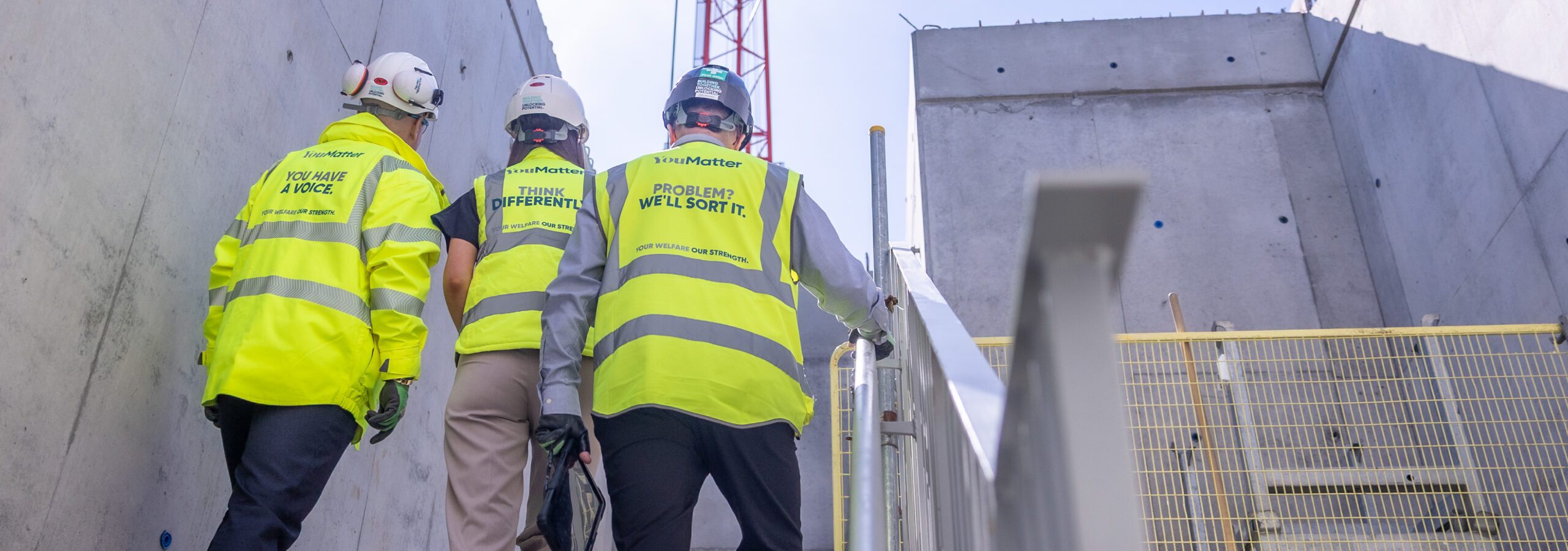Delivering schemes on-time, on-budget and to the brief are fundamental aspects of successful construction projects.
Throw in attention to detail, collaboration, and effective management, and you have a strong foundation to fulfil commitments and leave a lasting impact.
However, we know that creating the facilities the built environment needs – and making a difference to the communities that will use them – is about so much more than that. It’s about being responsible and forward-thinking too, not just prioritising bricks and mortar before moving onto the next scheme.
A focus on the environment
At McLaughlin & Harvey, leaving a positive environmental legacy is central to every project we undertake.
That’s why, from the outset we implement a site-specific environmental risk assessment on every project we work on. The results of this form the core of a bespoke environmental plan that includes mitigation measures, operational controls, emergency responses, carbon footprint impacts and a waste management plan.
This enables us to reduce our environmental footprint across all our construction and civil engineering projects, whether creating a state-of-the-art critical care facility or redeveloping and refurbishing a hospice to deliver cutting-edge facilities for patients.
We continue to hone and streamline our business practices where sustainability and the environment is concerned, with the ultimate aim of achieving direct operational emissions of net zero by no later than 2030. Furthermore, we are committed to working with our clients and supply chain to achieve net zero by 2040 and beyond net zero by 2045. It’s ambitious, but the industry can’t stand still if it’s to affect the positive change that’s required.
Healthcare leading the way
But where sustainability and the environment is concerned, we all must be on the same page.
That’s why it’s reassuring to see public bodies such as the NHS, making greener and cleaner construction a key focus.
For instance, the ProCure23 framework places an emphasis on the use of modern methods of construction and net zero carbon while also requiring a stringent focus on sustainability and social value.
We welcome this insistence on more environmentally-friendly practices where buildings are concerned, and indeed these principles align with our own here at McLaughlin & Harvey.
Pushing the boundaries
For instance, we’re currently working with the University of Edinburgh to deliver a new School of Engineering building which, at every stage, has been designed with the environment in mind.
Embracing low carbon technology in its material choices and construction methods, the building will feature rooftop photovoltaic panels which will convert sunlight into renewable energy to power the building, while it will also be home to a net zero living lab.
This eco-friendly space will enable researchers to monitor the building’s energy use in real time via microsensors installed over its four floors and test out innovative heating systems to pave the way for further energy savings in future.
We’re passionate about finding new and innovative ways to make our buildings better for both people and the environment, and are excited about working with our partners and supply chain to achieve this.
Putting people first
However, while there must be a focus on the technical side of construction as the industry strives for a more considerate future, people – and how projects within the built environment can positively impact them – mustn’t be overlooked.
It’s a topic close to our hearts, which is why we launched the YouMatter Communities initiative in 2020, aiming to positively impact 100,000 people by 2030.
Whether it’s through volunteering time and expert knowledge to support local third-sector and community organisations; offering small grants to community groups and organisations who want to make a difference locally; or providing community projects with free access to unused materials from construction sites, we’re committed to making a positive difference to the lives of the people in communities where we’re working.
Since 2020, we’ve already impacted over 40,000 lives and aren’t stopping anytime soon.
Striving towards a greener future
It’s incumbent on us, and the industry as a whole, to implement greener construction principles and support the communities where we work.
We’ve a way to go, and patience and planning will be key, but we’re on the journey to creating a more sustainable future.
We’re excited about collaborating with our partners – old and new – to achieve this.
